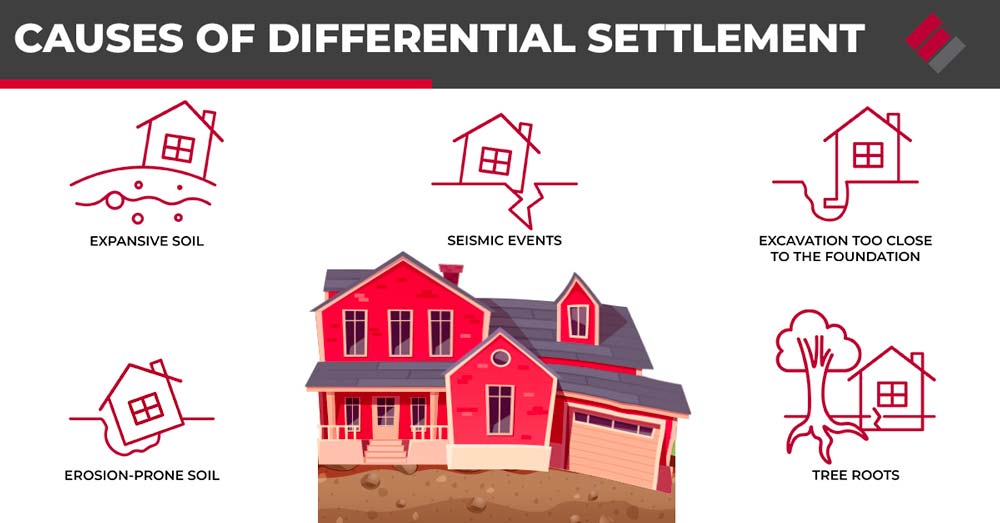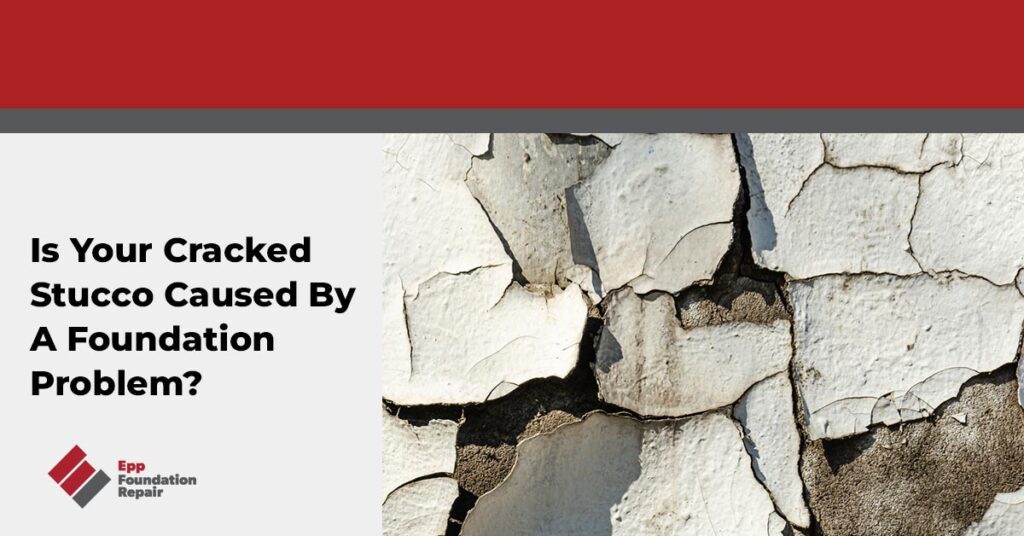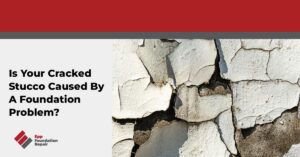Searching for information about cracked stucco? If so, you’ve landed on the right page because that’s what this article is about. We’ll review stucco, how it’s applied to a wall, whether cracked stucco is just a cosmetic issue or a sign of something more serious, repair options for cracked stucco, and more.
What Is Stucco?

Stucco is a type of plaster that has been used in building construction for centuries. It’s made by mixing powdered limestone or marble with sand and water and then applying it to a surface such as bricks, concrete, or wood. Stucco is commonly used for exterior walls but can also be used for interior walls and ceilings.
One of the advantages of using stucco is its durability. It’s resistant to cracking, chipping, and fading, and can withstand harsh weather conditions. Stucco also has good insulation properties, making it an energy-efficient option for both residential homes and commercial structures.
Stucco comes in various colors and textures, from smooth to rough, and can even imitate the look of natural stone. It can also be painted for additional customization.
Stucco application requires skill and expertise. Improper installation can lead to cracking and water damage. We recommended hiring a professional stucco contractor for installation and repair.
How Is Stucco Applied to a Wall?
Stucco application is a multi-step process that involves careful preparation and attention to detail.
- Clean the surface – Before applying stucco, the surface to which it will be applied must be clean and free of dust, dirt, and debris. Any cracks or holes in the surface must be filled to ensure a smooth finish. Once the surface is clean and prepped, a bonding agent is applied to help the stucco adhere to the surface.
- Prepare the stucco mixture – This typically involves mixing Portland cement, sand, water, and sometimes lime to create a thick, paste-like consistency.
- Apply the stucco to the surface – The mixture is then applied to the surface using trowels, working from the bottom up. Generally, a scratch coat is applied first, which serves as a base layer. Once the scratch coat has had time to set, a brown coat is applied, which further smooths the surface and creates a more even texture.
- Apply a finish coat – Finally, a finish coat is applied, which gives the stucco its characteristic textured appearance. This can be done using various techniques, including troweling, rough-textured rollers, or splatter brushes. Once the finish coat has been applied, it’s left to cure for several days, during which time it must be kept moist to prevent cracking. Once the stucco has cured, it can be painted or otherwise finished to achieve the desired final appearance.
The process of applying stucco requires skill and attention to detail. When done correctly, it can create a beautiful and long-lasting finish that enhances the appearance and value of any structure.
Why Does Stucco Crack?
Like other types of building materials, stucco can develop cracks over time due to different factors such as age, weather conditions, and wear and tear. Property owners should be aware of several types of stucco cracks.
- Shrinkage cracks – This type of crack occurs as the stucco dries. Shrinkage cracks are typically small, less than ⅛ inch wide. While they may be cosmetic, they can still allow moisture and insects to penetrate the wall and cause damage to the underlying structure.
- Cracks caused by differential settlement – This type of crack occurs when the foundation of the building settles unevenly into the ground. (See the infographic below.) Settlement cracks are typically larger and may appear in a diagonal pattern.
- Cracks caused by impact damage – Impact damage can occur when a hard object hits the stucco.
The chosen repair method will depend on what caused the cracked stucco. For example, shrinkage cracks can often be addressed with a simple coat of paint, while settlement cracks may require more extensive repairs, such as underpinning. We’ll talk more about repairs in just a bit.

Who Should I Contact If I Have Cracked Stucco?
We recommend you seek the assistance of a licensed foundation repair contractor or stucco repair specialist. They’ll be able to evaluate the extent of the damage and suggest the best course of action for repairing your stucco.
It’s also essential to prevent future damage to your stucco. This may include addressing any underlying issues with your home’s foundation, ensuring proper drainage around your property, and maintaining your stucco with regular cleaning and maintenance.
If you’ve noticed cracked stucco on the exterior of your home, it’s essential to address the issue as soon as possible. Cracked stucco can lead to water infiltration, which can cause costly damage to your property. It’s also possible that the cracked stucco is caused by differential settlement, a serious foundation problem.
How Are Stucco Cracks Repaired?
The first step in repairing stucco cracks is to identify whether the crack is merely cosmetic (non-structural) or a sign of an underlying foundation problem (structural). Small, non-structural cracks less than 1/8 inch wide can be easily repaired using flexible caulking or sealant, while larger cracks need to be assessed by an experienced foundation repair contractor.
For more information, see What Is House Underpinning?
Are There Other Signs of a Foundation Problem?
If you have cracked stucco and you’re wondering if it’s just a cosmetic issue or a sign of something more serious, look around for signs of a foundation problem. If the cracks in your stucco are accompanied by things such as windows or doors that don’t open and close properly, uneven floors, stair step cracks in brick or masonry, and visible gaps between walls and ceilings, then there’s a good chance the cracked stucco is a caused by a foundation problem. If so, you’ll need to contact a foundation repair contractor right away to schedule a foundation evaluation. Foundation issues can quickly escalate if left untreated, leading to severe structural damage and costly repairs.
For more information, see Structural or Non-Structural? Understanding Foundation Cracks.
How Can Cracked Stucco Be Prevented?
One of the best ways to prevent stucco from cracking is to ensure your stucco is installed correctly from the start. This involves using the proper techniques and materials during installation, such as applying a moisture barrier and using a high-quality stucco mix. It’s also essential to ensure that the stucco is applied to an appropriate surface free of debris, corrosion, and other contaminants that could weaken the stucco.
To maintain your stucco, you should regularly clean and inspect it for signs of damage, such as cracks or chips. Regular cleaning can help prevent the accumulation of debris and moisture, which can cause stucco to crack over time. Additionally, sealing your stucco with a high-quality, weather-resistant coating can help prevent water infiltration and reduce the risk of cracking.
If you’re concerned about cracked stucco, contact us today to schedule an evaluation. If we find a problem, we’ll give you a repair estimate. We serve areas in four states: Nebraska, Iowa, Kansas, and Missouri. The top cities we serve are Lincoln, Omaha, Grand Island, Kearney, Norfolk, and many more; contact us today for a free estimate.







